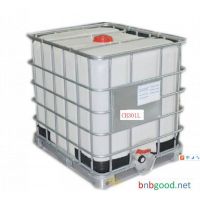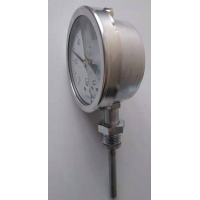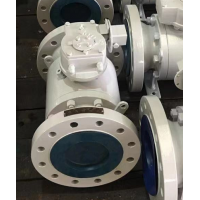=== The following information is translated by computer. Please contact the publisher.= = =R1800—SHSuperdispersant for carbon black and black masterbatch
R1800-SH is based on R1800-S for carbon black manufacturers and black masterbatch manufacturers.
A specially developed hyperdispersant.
Appearance: Blue Paste Taste: Weak Pork Oil and Gas Flavor
Amine value: <8 mg KOH/g density: 860/m3
Flash point: 287 C Viscosity: 1000-4000mPa and middot;
Acid value: <6 mg KOH/g dispersion:III
This product is a silicon and resin ether polymer, viscous paste, soluble in most organic solvents at room temperature, insoluble in water, with physiological inertia and good optical stability, electrical insulation and weather resistance. Low solidification point makes dispersive internal and external lubrication in many thermosetting and thermoplastic plastics.
This product is used in carbon black factories, usually in wet granulation of carbon black with other additives and carbon black mixed granulation, dry granulation before crushing uniformly into the carbon black after crushing temperature to achieve its dispersion effect. When used as masterbatch, the product is directly mixed with other additives in a high-speed mixer. When the temperature reaches about 100 C, the resin, resin and carbon black are added to mix evenly and then the granulation is released. Its function is to reduce the oil absorption value of carbon black, improve its dispersibility, fluidity, internal and external lubricity, and enhance its dyeing rate and compatibility.
Packaging: 20kg/PE plastic drum.
Surface treatment of carbon black with R1800-SH Hyperdispersant and its application in black masterbatch
The main components of R1800-SH Hyperdispersant are silicon and resin ether polymers, color: blue paste, PH value: 6.2-6.4 at 80 C. The color phase will deepen with temperature change, and it will not affect the color when used in products. It has good compatibility with all rubber and plastics, lubricity is 28 times that of wax, and dispersibility is wax. 122 times.
R1800-SH Hyperdispersant at 28 C
Surface treatment of carbon black with R1800-SH Hyperdispersant was carried out. The optimum surface treatment process of R1800-SH Hyperdispersant was explored. The suitable surface treatment conditions were found (PH=6.2, 80 C, the dosage of R1800-SH Hyperdispersant was 1%). (If it was treated by carbon black factory, alcohol solvent was suggested to be diluted and its purpose was to increase the content of carbon black. The black masterbatch prepared by using carbon black treated under this condition can be used to improve the dispersion, blackness, surface luminosity, covering power and processing performance of carbon black in plastic products.
As an inorganic pigment, carbon black is widely used in masterbatch. However, in the process of use, the finer the pigment particles are, the easier they are to agglomerate together, resulting in large particles, affecting product quality, so they can not be used directly, and must be dispersed. The dispersing process of pigments can be divided into three parts: wetting, stabilization (coating) after fining (dispersion). Surface treatment of pigments is the process of stabilization of pigments after refining. Single or multi-molecular substances, including surfactants, modifiers, derivatives of pigments themselves, are deposited on the surface of pigments.
The surface treatment of carbon black with R1800-SH Hyperdispersant obviously improves the dispersibility of carbon black. The optimum amount and process conditions (temperature) for surface treatment of carbon black with Hyperdispersant were found.
theoretical analysis
The molecular structure of R1800-SH Hyperdispersant is mainly divided into two parts, one of which is anchoring group-COOH. These polar groups are tightly adsorbed on the surface of pigments through ion bond, hydrogen bond and van der Waals force to prevent the resolution of R1800-SH hyperdispersant. The other part is the dissolving chain (dispersion), which directly determines the stability of the dispersed pigments in solvents (the coating will not dissolve at lower than 80 C, and the coating will begin to dissolve at higher than 80 C to convert into ionic coupling agent to improve the compatibility of carbon black and resin). For this reason, the solvation chain is required to have a high affinity for dispersants in order to ensure good solvation effect. The R1800-SH Hyperdispersant forms a certain thickness of coating on the surface of pigment particles, and the solvation chain extends in dispersants. When the pigments adsorbed with R1800-SH Hyperdispersant are close to each other, the particles will bounce off each other due to the repulsion of the adsorption layer, thus realizing the stable dispersion of pigments in the medium.
Charge enrichment on the surface of carbon black pulp can easily be combined with the anchoring group of R1800-SH Hyperdispersant (-COOH) to form a solid protective layer on the surface of carbon black particles. The carbon black can be stabilized and dispersed through the three-dimensional barrier effect of R1800-SH Hyperdispersant dissolving chain (hydrocarbon chain).
Experimental part
1. Experimental raw materials
R1800-SH Hyperdispersant
Polyethylene Wax in Indonesia
Pigment Carbon Black DK2028P from Deco, Shaoxing
Saudi LLDPE 218W
2. Main instruments and equipment
15L mixer, 35 single screw granulator, 30 extrusion film blower, photoelectric spectrophotometer, torque rheometer, photoelectric direct reading color meter, color card puncher
3. Experimental methods
Carbon black and R1800-SH Hyperdispersant polyethylene wax were first added to the high-speed mixer and stirred until the temperature reached 110 C. LLDPE218W was added. After the material was stirred evenly, it was discharged into the granulator for granulation.
Experimental formula: carbon black DK2028P 50g, R1800-SH 1g polyethylene wax 10g LLDPE 218W 39G
Technological process:
Carrier resin
Blackness of Blowing Film Covering Force in Pigment Granulation by High Speed Mixing
Hyper dispersant
4. Performance testing
(1) Test of film covering force
Covering power refers to the ability of a pigment to conceal the background color of a colorant. Masterbatch made of carbon black pretreated with different content of Hyperdispersant is blown into thin film. The transmittance of thin film is measured and converted to the optical density value of standard film thickness (0.02mm) (hereinafter referred to as optical density value). The greater the light density, the higher the covering power.
(2) Coloring test
Colouring power refers to the ability of pigments to colour. The dyeing power of carbon black in plastics can be expressed by blackness. The greater the blackness, the higher the dyeing power of carbon black. The black masterbatch was made of different pretreated pigments, and then the sample was made. The blackness (TW) equivalence of the masterbatch was measured by a chromatometer.
(3) Dispersion testing
Dispersion refers to the dispersibility of pigments in the colored medium. Dispersion characterization and qualitative methods are observed and photographed by contrast microscopy or electron microscopy. Quantitative method is to determine particle size distribution.
(4) Processing Performance Testing
Processing rheological property is one of the important indexes of carbon black used in plastics. Torque rheological method can be used to evaluate the processing performance of carbon black.
RESULTS AND DISCUSSIONS
Covering power
Covering power is an important performance index of black masterbatch. Dispersion level of pigments is the main factor affecting the covering power. The more evenly dispersed the pigments, the smaller the particles, the greater the light density, and vice versa.
Different dosage of R1800-SH Hyperdispersant has different effects on the dispersion of carbon black in the film (constant PH=6.280 C, changing the content of Hyperdispersant 1%-5% to treat the surface of the pigments). The following figure is the light density curve of the film with the dosage of hyperdispersant.
As can be seen from the above figure, with the increase of the dosage of R1800-SH hyperdispersant, the optical density increases gradually and reaches the maximum value, and then decreases sharply with the further increase of the dosage. When the dosage of Hyperdispersant is 3%, the optical density of the film reaches 0.487.
The amount of R1800-SH Hyperdispersant is related to the specific surface area of the pigments. At first, with the increase of the content of R1800-SH hyperdispersant, more and more anchoring groups were adsorbed on the surface of the pigments, reaching saturation at 3%, and the light density was the highest at this time. With the further increase of the dosage of R1800-SH hyperdispersant, because the interaction between R1800-SH Hyperdispersant produces and ldquo; bridging flocculation and rdquo; pigment particles flocculate through the entanglement of Hyperdispersant dissolution chain, so the light density value decreases.
Coloring power
The dyeing power of pigments mainly depends on the properties of the pigments themselves, but it is also affected by the dispersion of pigments, which is mainly characterized by the blackness of the samples.
Effect of the dosage of R1800-SH Hyperdispersant on the colouring power
Ultra-dispersant dosage% | Blackness |
1 | 120 |
2 | 124 |
3 | 130 |
4 | 128 |
5 | 125 |
As can be seen from the table above, the amount of R1800-SH Hyperdispersant to blackness is higher than the corresponding value of untreated pigments. This shows that the use of R1800-SH Hyperdispersant improves the dispersion of carbon black.
Dispersivity
Dispersion has an important influence on the application of carbon black in plastics.
Figure A below is surface treated carbon black, provided that the dosage of R1800-SH Hyperdispersant is 3%, the PH value is 6.2 and ethanol at 80 C is 1:1. B Untreated carbon black. It can be seen that the dispersion of A is more uniform and the carbon black particles are smaller, while in B, the carbon black particles agglomerate seriously. Therefore, the dispersibility of carbon black treated with R1800-SH Hyperdispersant is obviously improved.
Carbon black treated by 3% R1800-SH is 0.1g B and untreated is 0.1g.
A Carbon Black Treated by 3% R1800-SH and B Carbon Black Untreated
A, PE99% carbon black 1% B, PE99% carbon black 1%
The dispersibility of carbon black is measured quantitatively and qualitatively. The dispersion of pigments can be quantitatively observed by phase contrast microscopy.
Rheological properties determination
Hyperdispersant is composed of anchoring group and dissolving chain. The surface treated carbon black with Hyperdispersant not only improves the dispersibility and covering power, but also changes the flowability of masterbatch due to the good compatibility between the melting chain and the carrier.
conclusion
Through the above experimental analysis, we can draw the following conclusions:
Carbon black was treated with R1800-SH hyperdispersant, which greatly improved the dispersibility of pigments. On the contrary, the blackness and processing properties of carbon black are improved without changing the properties of the pigments.
The amount of R1800-SH Hyperdispersant has an effect on the surface treatment. The best treatment effect is when the amount of R1800-SH Hyperdispersant is 3%.
The surface treatment effect is the best when the temperature is over 70 C.
contact supplier or email to admin@b2bgood.com for purchase help

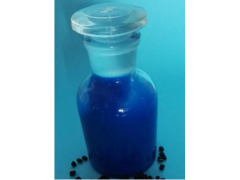
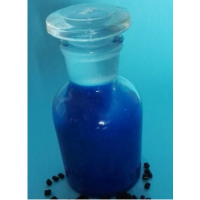



 PassAuthentication
PassAuthentication 


